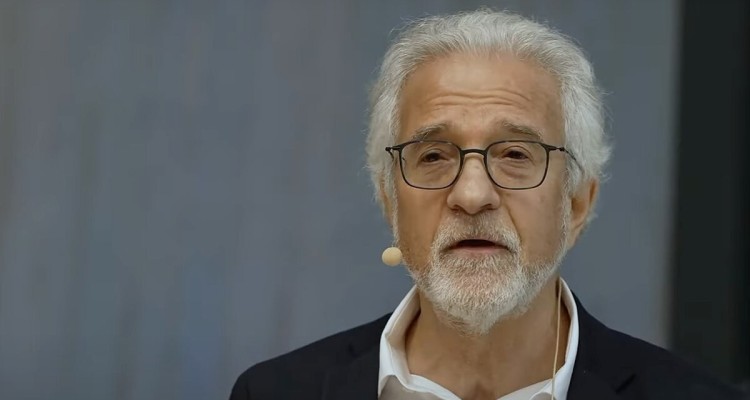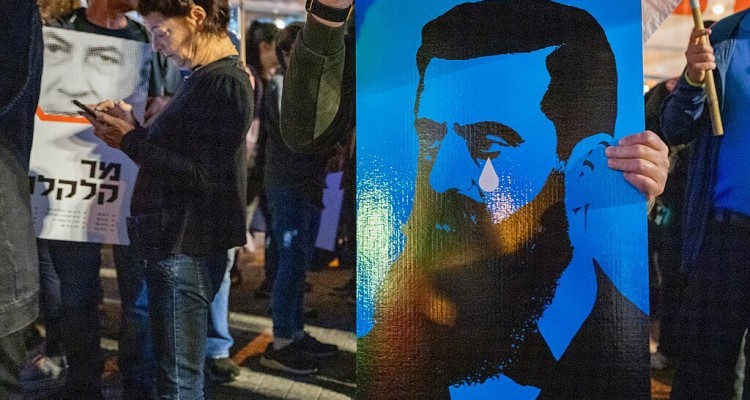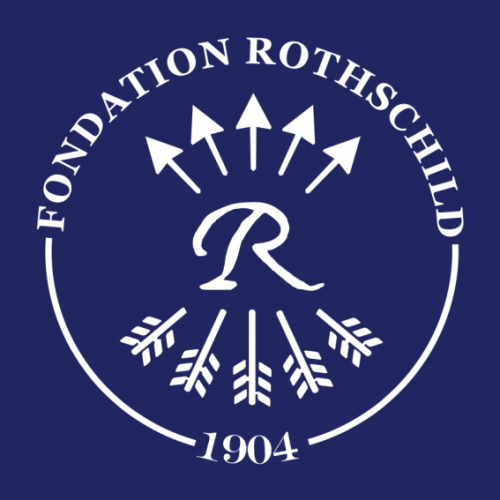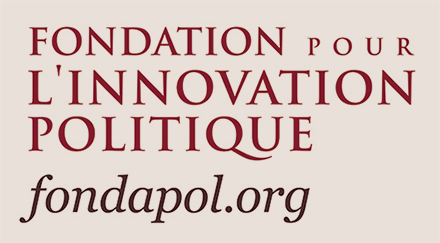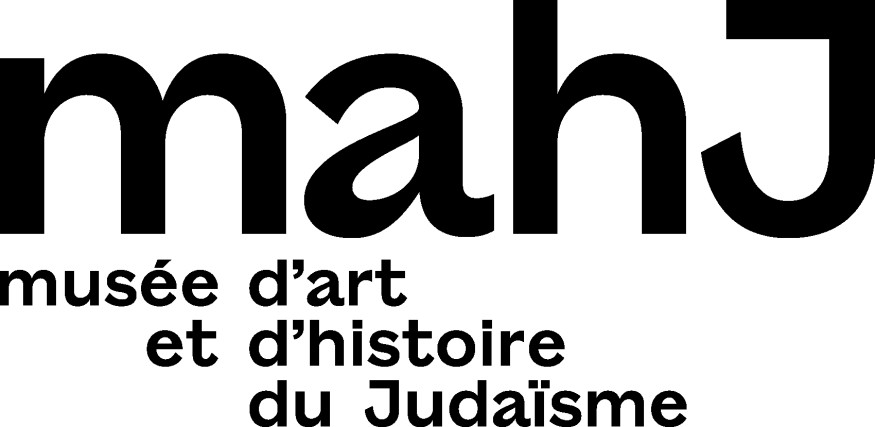Between 2009 and 2020, Marie Moutier-Bitan made around 25 trips to the former territories of the Soviet Union with the Yahad-in Unum association. Her fieldwork focused in particular on Eastern Galicia, now Western Ukraine, where the author of Le Pacte Antisémite (untranslated from French) attempted to identify the mechanisms that led to the extermination of the Jews in this region, transforming, in the space of a few weeks, the Jews into victims and their neighbours into executioners.
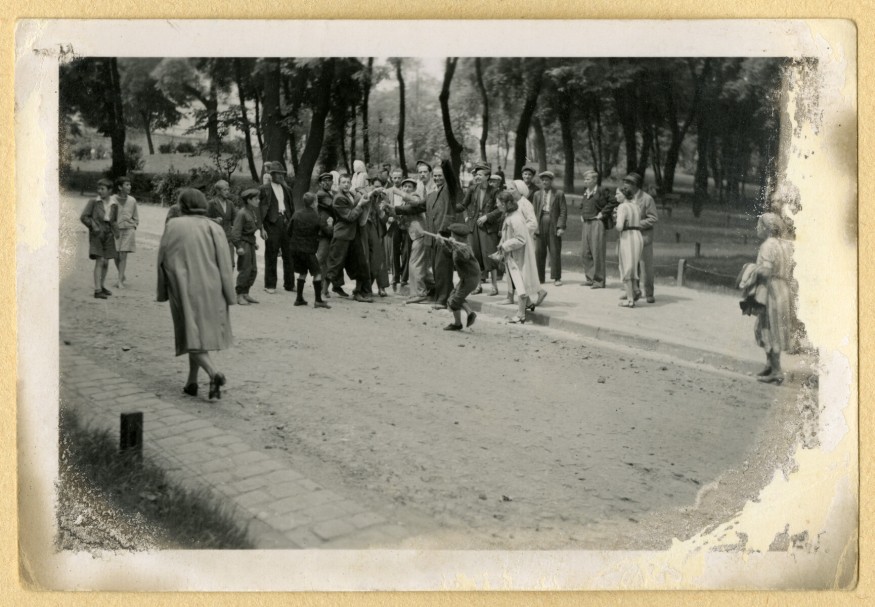
Following on from your book on the Shoah in the occupied Soviet Union between 1941 and 1944, The Anti-Semitic Pact focuses on the very first weeks of the Shoah in Eastern Galicia. How did you manage this change of scale, in space and time, and why?
Marie Moutier-Bitan: The first book, Les champs de la Shoah, covered the entire territory of the occupied Soviet Union. I had made around 25 field trips over ten years across Russia, Belarus, Ukraine, the Baltic States, Poland and Moldavia. There was no summary in French of the history of the Shoah committed in these territories. I wanted to fill a gap. But I also felt the need, after so many years of research, to relieve myself of a heavy burden, to share a history that was difficult to bear. The Anti-Semitic Pact concerns a very specific region, Eastern Galicia – which today corresponds to Western Ukraine – where the concentration of the Jewish population was extremely high: there is talk of around 570,000 Jews on the eve of Operation Barbarossa. I wanted to study the mechanisms that led to the extermination of an entire population. I wanted to find out how a territory, at the level of a town or village, at the level of a family, was tipped over into the Shoah. How, from one day to the next, you become hunted down, persecuted and murdered. How, from one day to the next, you become a killer and sometimes the executioner of your neighbour. Concentrating on a single region allowed me to accumulate all the archives and documentation on the subject, to bring together all the voices of both the Jewish executioners and victims, and also those of the neighbours, in order to unravel the genocidal process set in motion from the turning point on 22 June 1941. What I’m recounting takes place over a period of around four weeks. Four weeks in which most of the protagonists were given a great deal of room for manoeuvre, in which the initiative was left to the local population, who were free to decide whether or not to take part in the massacre of the Jews. Wehrmacht soldiers who were members of the Einsatzgruppen were also able to choose individually whether or not to take part.
And they did take part.
Yes, they do take part, because in fact everyone is turned upside down…
This was a time when the Shoah was still in its experimental stage. What would happen then?
22 June 41 was a turning point in the persecution and extermination of the Jews of Eastern Europe. However, a stage had already been reached earlier, during the Polish campaign. From 1ᵉʳ September 1939, Jews had already been mass murdered, as well as Poles belonging to the intelligentsia. Hitler’s stated aim was to destroy Poland, which in his eyes represented the affront of the Treaty of Versailles. He therefore wanted to destroy the very foundations of Poland, but he also organised shootings of Jews. This began in September 1939, including in Eastern Galicia, which was briefly occupied by Nazi forces before being annexed by the Soviet Union. At the beginning of November 1939, around 500 Jews were shot in the Polish town of Ostrów Mazowiecka: it was the first mass shooting of Jews on the scale of an entire town, including men, women and children. Poland, where the Einsatzgruppen had already been present in September 39, was seen as a kind of laboratory. To prepare for Operation Barbarossa, Hitler drew conclusions from this experience on Polish soil by creating more Einsatzgruppen and issuing directives that recommended, for example, that Wehrmacht officers and non-commissioned officers be given the initiative in reprisals against the civilian population. As early as 22 June 1941, 90% of the army’s reprisals against the civilian population targeted Jews. And these officers had free rein, so they could organise reprisals against the civilian population on the mere suspicion of the presence of snipers or resistance.
Bearing in mind that behind the image of the “maverick”, as you develop in one of the chapters of the book, lies the figure of the Jew…
Absolutely. The image of the maverick merges with the image of the Jew, and more specifically with the image of the Ostjude, the Jew from the East. It’s a very specific image: the Germans don’t have the same vision of the Jews of Berlin, for example. The Ostjude is an extremely strong symbolic figure, regularly used in Nazi propaganda. When German soldiers discovered this territory in the East and they actually came across these Ostjuden with their cafetans, long beards and hairnets, they immediately targeted them. They degraded the Jews by, for example, forcing them to walk on all fours. They documented this by taking photos. All this propaganda was made public. The German soldiers reproduced this persecution almost systematically, wherever they arrived. In the appearance of these pious men, they somehow found confirmation of what they had read in the Nazi propaganda newspapers. These religious Jews were also easily identifiable by the German viewer or reader in filmed newsreels or in the press.
The withdrawal of Soviet troops at the same time was a real opportunity for the Germans to point the finger of blame at the Jews. Was this part of the Nazi strategy in preparing Operation Barbarossa?
Yes, from the outset, they presented this war of annihilation against the Soviet Union as a war against Judeo-Bolshevism. It was immediate. The discovery, in the prisons of Lviv for example, of corpses of opponents or former inmates of Soviet jails, would add fuel to the fire of Nazi propaganda. The Germans seized on this evidence of Soviet atrocities to support their claim to be the liberators of these regions. At the same time, they forced Jews to remove these corpses from the prisons to create a sort of almost physiological link between the so-called executioners and their so-called victims. Photographs are taken here too. Once again, all this was also a communication operation, aimed both at the soldiers who were present and who witnessed these staged events – because they were really staged events – and at German public opinion, to reinforce the idea that this invasion was a war of defence against the “Asian hordes ready to sweep across Europe and obviously supported by the Jews”. The Jews were the presumed accomplices of the Soviet Union. With such a speech, Hitler insisted on the fact that when you kill Jews, you destabilise the Soviet Union. The myth of Judeo-Bolshevism was expressed from the very start of the war and was superimposed on the much older anti-Semitic myth, adding an extra layer and perhaps a decisive one, because this myth served as a trigger, in the sense that it was used to justify the 4 million German, Romanian and other allied soldiers launched into the war against the Soviet Union. It was superimposed on previous layers of religious, cultural and socio-economic anti-Semitism, particularly in those regions that were still Polish before 1939, whose populations were extremely segregated and where around 80% of shopkeepers were Jewish. The Germans were going to take advantage of all the socio-professional resentments that existed in this society, which functioned willingly or unwillingly, but with great tension. The particularity of this region of Eastern Galicia was the existence of three extremely large populations: Ukrainians, Jews and Poles. The Germans therefore played on the tensions between these different populations.

To return to the title of your book, what does the expression “anti-Semitic pact” mean? What kind of collaboration does this pact entail? Is it to some extent a tacit pact? How did it come about?
The Germans were expecting pogroms… But what we saw were not spontaneous pogroms, but pogroms that were both “spontaneous” and planned. There is an organisation that makes them possible. An organisation and a history. From the 1930s onwards, extremely strong links were forged between the OUN, the Organisation of Ukrainian Nationalists, and the Abwehr, the German army’s intelligence service. The Abwehr helped finance the Ukrainian nationalist movement. Links were forged. From the start of the war, Ukrainian nationalists moved into the German-occupied zone of Poland. They met in Krakow in particular, as was the case for Stepan Bandera, head of the OUN. They entered into discussions with the Germans, who were obviously preparing for the rest of the war and Operation Barbarossa. To secure the support of these Ukrainian nationalists, Hitler promised them independence. They had been waiting for this moment for a very long time and they thought that the Nazis were going to be able to offer it to them. In this Ukrainian nationalist discourse, there is the idea of a Ukraine that is only for Ukrainians, in other words a Ukraine that is free of Jews, but also of Poles and Russians. The idea is to give the Ukrainians back their rightful place in these territories. In concrete terms, how was this implemented? Heydrich asked the Einsatzgruppen to make contact with these Ukrainian nationalists who were very well established in the countryside. There were OUN activists in every village. Heydrich wanted to rely on this network of Ukrainian nationalists, who knew how to organise themselves in a completely clandestine way. The leaders of the Einsatzgruppen would therefore rely on these local Ukrainian relays to trigger the pogroms. The pogroms could even begin before the Germans arrived, i.e. as soon as the Soviet troops withdrew at the earliest. From then on, there was a power vacuum, but only for a few hours, because Bandera’s Organisation of Ukrainian Nationalists had already decided who would be mayor of which village, who would sit on which municipal committee, and so on. All this was organised well before 22 June 1941. As soon as the Soviets left, “municipal committees” were organised, made up exclusively of local Ukrainians. The members of this committee could be the village teacher, often the Greek-Catholic Uniate priest, and there were also women. Their first official decision would be to launch a pogrom, either the next day or in the days that followed. Information circulates immediately in the village.
So you have to be aware of a network that goes down, say, from Heydrich to Bandera and the members of the OUN. You mustn’t have the idea of a crowd suddenly unleashing its criminal impulses…
No, absolutely not. The fact remains that when the pogrom breaks out, people will spontaneously join in and take part. When you think about the pogroms of the Russian Empire, such as those in Odessa, which I’ve been able to work on, you realise that they don’t just appear out of nowhere: there’s always a government body behind them. In 1905 in Odessa, for example, the Tsarist army, to counter revolutionary activities, incited the local population against the Jews. In Eastern Galicia, at the end of June and beginning of July 1941, directives were circulated in the villages saying “on a given day, for 24 hours, you can do what you like with the Jews”. Some were going to murder Jews, others were going to enter their houses and loot everything in them or rape the women. The local population was given free rein. What we can see from these pogroms in Galicia in 1941 is that German authorisation or encouragement is not enough. A local intermediary was needed for the population to decide to take part in the pogroms. The assent of a local authority figure was essential. Let me explain: in some localities – not many, but it is worth mentioning – the Uniate priest opposed the pogrom and it did not take place.
Is it fair to say that the leaders of the OUN wanted to physically liquidate all the Jews in their new Ukraine?
Yes. They don’t want any more Jews on their territory. And that’s why they were obviously going to participate decisively in the pogroms that Heydrich called for. They supported these massacres. It is interesting to note, to return to this question, that in June 1941, the OUN did exactly what the Germans wanted them to do, which was to kill Jews. But the Ukrainian nationalists did not just want to kill Jews, they also wanted to get rid of the Poles. At the end of June, beginning of July 41, the Poles living in the region were extremely worried. During the pogroms, they usually stayed at home because they thought they were next on the list. And they would indeed be next, from 1943 onwards, when the OUN and its armed wing, the UPA, on their own initiative and without waiting for the Germans to react, massacred entire Polish villages.
What did Bandera know about the plan for the total extermination of the Jews?
Bandera? As far as the Jews in Eastern Europe were concerned, he knew exactly that they were going to be exterminated. He also saw what happened to Polish Jews between 1939 and 1941. Ukrainians from Eastern Galicia in general, on the eve of Operation Barbarossa, knew what the fate of the Jews in Poland would be. This also encouraged them to commit looting and other crimes against their Jewish neighbours. Bandera knew everything. What’s more, in the region where he was based, where other Ukrainian nationalist leaders were also based, there were training camps, such as those at Trawniki, made up of Ukrainians who were destined to serve as local policemen, but also, later on, as guards in the killing centres in Poland.
Your book is the result of a number of visits to the region. Can you tell us a little about your impressions of these trips?
My first trip was in 2013, with the Yahad – In Unum association. Until then, I had been to regions far to the east, mainly in the Donbass, eastern Belarus and also in Russian regions such as Smolensk and Krasnodar. In Eastern Galicia, I found myself in a completely different reality, one that is specific to border areas, confronted with the history of these tensions between Poles, Ukrainians and Jews. Above all, I met older people who had been born between the mid-20s and the early 30s, who had been children and teenagers at the time of the Nazi occupation. Before making any other comment, I should point out something that is very striking when you go to this region and see the diversity of its pre-war population: it no longer exists. There are no Poles, there are no Jews. We are listening to the words of a Ukrainian population of elderly people who will first tell you about this pre-war period, insisting on the relations they had with their neighbours, both Poles and Jews. In 2013, the words of these ‘neighbours’ were destabilising. I remember, for example, an old man taking us to a shooting site – where, incidentally, there was no memorial, no plaque to remind us that Jews had been killed there – where he mimed the whole scene of the massacre with his walking stick. And he was hilarious. At the end of the interview, once the camera had been switched off, he told us that he had been a member of the UPA [the armed wing of the OUN] and he told us very quietly that he had massacred Polish women and children from 1943 onwards. I remember another man saying that Hitler should have killed all the Jews. That he hadn’t finished the job. He was obsessed by a pre-war story about his father drinking on credit in an inn run by a Jew. When the Jewish innkeeper came to present him with the bill some time later, his father didn’t have the money to pay. They were a very poor family and his father had to give away the last cow that fed the family. After this story, I said to myself that I really needed to study the relations between Jews and non-Jews in this region before the war, with these stories from neighbours, these family stories, personal stories, where there is often a lot of resentment. I also had to find a counterbalance to these stories by delving into the testimonies of the Jewish survivors of this region. That’s what I think was most exciting about my work when I became interested in this region: these neighbourhood relationships, the local environment. Of course, I already had an idea of the mechanisms of the extermination of the Jews by the Nazis and I wanted to unravel the relationships between Jews and non-Jews, to compare the different representations they had of themselves and of others.
How many witnesses did you meet, Jewish survivors or neighbours?
Over a period of ten years when I visited this region, I didn’t meet any Jewish survivors. I did meet some elsewhere, in Bucovina or in the Chernivtsi region, for example. I also met some in the Soviet zones. But in what was Eastern Galicia, there were none left. The context of the occupation was really different. So I used the testimonies collected by the Shoah Foundation and the Spielberg Foundation to hear what these survivors had to say. Most of them had emigrated, either to the United States, Israel or Canada. Many, of course, had already passed away by the time I carried out this research. While I did not meet any Jewish survivors on the spot, I did meet around 500 Ukrainian neighbours in the nearly two hundred villages I visited. As Jews had lived in every one of them, and shootings had taken place in almost every village, the investigation took on considerable proportions. What’s striking is that half of these places have no memorial indicating the location of the mass grave.
This means that half of them do. You’d think there would be very few…
There are memorials, most of which are of course funded by foreign organisations. But half the sites are not many compared with the rest of Ukraine or countries like Belarus and Lithuania. In Lithuania, there has been recent work to memorialise all the mass graves.
How do you assess the memory of the events described in your book in today’s Ukraine?
I noticed a change in the neighbours’ accounts at the start of the 2014 war. When they talked about the organisation of the shootings of Jews, they no longer mentioned the involvement of the local Ukrainian police. They said it was Russian policemen, and more specifically “Vlassovs” – as Russian collaborators with the Nazi regime were called. This is impossible. When we asked them about the role of the local Ukrainian police, they also told us that they were content with surveillance missions in the streets of the town. Who was helping the Germans to guard the ghetto? The answer was: the Jewish police. All on their own. The role of the Ukrainian police disappeared completely. These were old people talking to us, influenced by the prevailing discourse, in the context of a war against Russia – that of the annexation of Crimea and the war in the Donbass. Where I also sensed a shift was that until 2013, the older men I met who had been in the OUN or the UPA would tell us off-camera, in a somewhat confidential, secretive way. They weren’t ashamed, but they didn’t want anyone to know. On the other hand, from 2014 onwards – it was really blatant – they very openly declared themselves, even during the interview, as former members of the OUN. I couldn’t say that they claimed it, but they weren’t at all bothered by the idea of mentioning this past.

Why was that?
There was a local interest in their struggles on the part of the younger generation. What’s more, the fact that these men were able to say that they had been members of the OUN enabled us to conduct interviews on the way the OUN was organised at the time. The circumstances made it possible for them to speak out. Obviously, they didn’t talk about the involvement of members of the OUN in the extermination of Jews in the villages of Eastern Galicia, but at least they accepted the fact that they had been part of the OUN. They were happy to talk about it. It was no longer a secret. In fact, on my recent trips, I saw portraits of Ukrainian nationalists like Stéphane Bandera all along the roads of Eastern Galicia. Memories overlapped and tended to erase the local involvement in the extermination of the Jews.
And what was the attitude of the younger Ukrainians you met outside the context of your interviews?
It was much more moderate and, you might say, more ‘European’. But there was still the idea that Ukrainians and Jews had suffered together under the Nazi occupation. They didn’t completely reject the fact that Jews were victims of the Shoah. Of course they didn’t. But they had the idea of a kind of community of destiny. The only guilty parties were the Germans.
In any case, you were faced with a falsification of history.
They adopt an extremely simplistic political discourse, without any nuance. But the history of this region is very complex, with real suffering on the part of the various populations during the period of Nazi occupation and then under the Soviet regime. Unfortunately, the current war is rendering the complexity and nuances of the story inaudible, in favour of a more Manichean political discourse.
When you were confronted with obviously anti-Semitic Ukrainians, what did they say if you reminded them that a Jew was at the head of Ukraine at war with the Russians?
I never asked that question. And I haven’t been back there since the start of the Russian aggression in 2022. Faced with some of the openly anti-Semitic speeches I heard during the interviews I conducted, you are prepared to maintain a historian’s distance. But I have to point out that not everyone I met was saying that kind of thing, far from it. I was also greeted by some extremely kind-hearted people, whose memories were quite different from those we had insisted on. I remember, for example, an old lady lying half on her bed because she was not very mobile, who explained how she was going to bring food into the ghetto for her friend, how she tried to pull her out of the column that was leading her towards the shooting. There were also some touching stories of friendship, especially as the people I spoke to were children or teenagers at the time. So they were less involved than adults in the occupation structures. When I explain the work I’ve been doing for ten years, people often say to me: “You interviewed executioners”. Things are much more complex than that. It’s really the neighbours, even if this category deserves a broader, more detailed definition – and this is one of the challenges of current historiography. There’s no denying that some of them were executioners, but what interested me most was this in-between, this grey area that is extremely complex to define: these civilians caught in a vice between executioner and victim, with a geographical proximity to the crime that prevents any ‘neutral’ behaviour. A child who took part in the looting and salvaged a pair of shoes from his neighbours’ house. What is his status in the extermination? What is the status of those people who are requisitioned by the local authorities to dig the pits and then to fill them? Or who were requisitioned with their carts to take the possessions of Jews from the ghetto that had just been liquidated to the station? Testimonies from Jewish survivors say that they were saved by local policemen, the same ones who had killed the rest of their family…
In your book, you mention a few stories of neighbours who saved “their” Jew…
Yes. But the opposite is also true. I mean, knowing ‘your’ Jew well can be to his detriment. It’s first or only the Jew who is murdered by the neighbour. I really wanted to conduct an investigation from a human perspective, to understand all the social mechanisms that may have been set in motion. I would add here that most of the elderly Ukrainians I met in Eastern Galicia were motivated by the idea of also paying tribute to their Jewish neighbours, and many of them accompanied us with emotion to the sites of the mass graves. Grandchildren regularly attended interviews with their grandparents. In addition, a new generation of Ukrainian researchers is taking up these subjects of neighbours, collaboration, nationalists and the memory of the Shoah. I have never encountered any difficulties in Ukraine when researching the Shoah. So I want to be optimistic and I have every hope that this history of the Shoah, so complex, so painful, so terrible because it was produced in a familiar environment, will be taught and passed on with all the rigour required in Ukraine in the years to come.
Interview by Stéphane Bou and Elena Guritanu
Marie Moutier-Bitan has a doctorate in contemporary history from the EHESS and wrote her thesis on “Permits to kill. The first phase of the extermination of Jews in Eastern Galicia, 22 June-1 August 1941”. She worked for Yahad – In Unum for ten years and carried out numerous field missions in Ukraine, Russia, Belarus, Moldavia, Lithuania and Poland, documenting the Holocaust in the occupied former Soviet Union. As well as ‘Le pacte antisémite’, she is the author of ‘Lettres de la Wehrmacht’ (Perrin, 2014) and ‘Champs de la Shoah. L’extermination des Juifs en Union soviétique occupée, 1941-1944’ (Passés composés, 2020).

